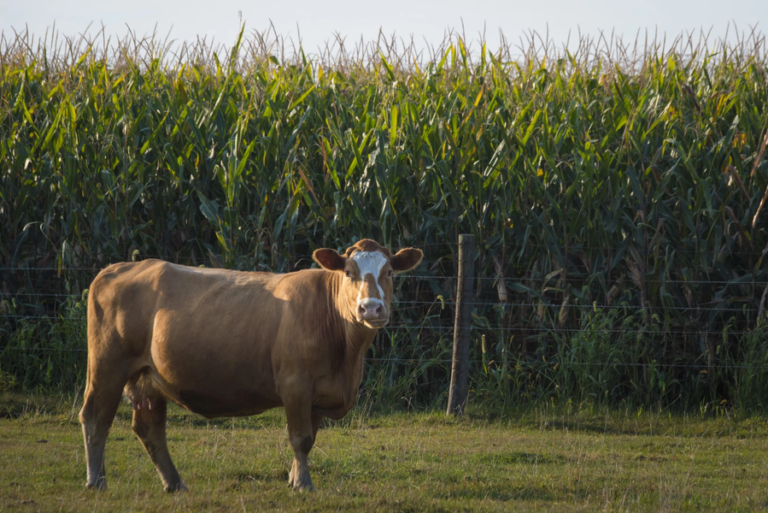An Environmental Working Group report questions the effectiveness of some farming practices that the U.S. Department of Agriculture recently added to its Environmental Quality Incentives Program (EQIP), which offers financial incentives to farmers for using conservation practices. The USDA counters that the practices have gone through “a rigorous science-based evaluation process.”
An environmental activist group charges that many “climate smart” farming practices recently added to a list for U.S. Department of Agriculture funding are not yet proven.
The Environmental Working Group says funding from the Inflation Reduction Act should not be used to pay farmers for using the practices, until there is more evidence that they work.
The EWG made the charge in a new report issued Wednesday about the Environmental Quality Incentives Program, or EQIP.
The program, run by the USDA’s Natural Resources Conservation Service, was launched in the 1990s, but its current authorization comes from the 2018 Farm Bill. EQIP helps farmers with funding to implement conservation methods that have met the department’s approval. Since 2023, its funding sources have included money authorized by the Inflation Reduction Act to fund climate change mitigation efforts.
But the EWG report says many of the 15 practices earmarked for that funding “likely do little or nothing to help in the climate fight.”
“USDA says that they have literature showing that these practices have climate benefits,” said agricultural economist and EWG Midwest Director Anne Schechinger, who authored the report. “But they don’t actually have any quantifiable data showing that these practices reduce greenhouse gas emissions.”
She said eight of the 15 practices are for irrigation and livestock, management techniques “that likely don’t reduce emissions,” and in one case, may even increase emissions.
Funding from the Inflation Reduction Act specifically meant for addressing climate change should be reserved for practices proven to be effective, Schechinger said. While the USDA’s NRCS plans to study the possible benefits of the new farming practices this year, she said until the results of those studies are in, the practices should be removed from eligibility for IRA funding.
New Practices:
- brush management
- irrigation system, sprinkler
- waste storage facility
- irrigation pipeline
- waste facility cover
- irrigation system, micro
- pumping plant
- woody residue treatment
- herbaceous weed control
- prescribed burning
- wildlife habitat–restore and management
- fuel break
- composting facility
- feed management
- soil carbon amendment
The USDA is defending the EQIP program’s climate-smart agriculture practices.
In a statement, spokesman Allan Rodriguez said the department used “rigorous, science-based methodology” to determine which practices are eligible — and that farmers who qualify for funding must use the practices under specific conditions to maximize their effectiveness.
Rodriguez said the Environmental Working Group’s findings were “fundamentally flawed, speculative, and rest on incorrect assumptions around USDA’s selection of climate-smart practices.”
Jonathan Coppess, who researches federal ag policy as an associate professor at the University of Illinois, said the EWG report does raise valid concerns. He said that while he can sympathize with the USDA’s position, he points out that Inflation Reduction Act funding is scheduled to end after the 2026 fiscal year.
“Once the funds are out, you can’t pull them back,” said Coppess. “And so, if they are misspent, it’s a missed opportunity in a significant way to do what is an important effort for agriculture, for our food system, and for the climate.”
But according to Erik Lichtenberg, there are more benefits to the practices in question than the EWG report credits. The University of Maryland agricultural economist, who has studied the USDA’s approach to conservation and climate change, said paying farmers to implement practices that are not fully proven is a way to find out how they work under a wide range of conditions and climates.
“We’re fairly new to managing agriculture to mitigate climate change impacts, and that means we really need to be experimenting to see what does work and what doesn’t,” Lichtenberg said. “Farming practices that work in one place, don’t work in another. So, we’re really going to need to experiment a lot and adjust for local conditions a lot.”
The USDA has funded only about a third of the applications they received from farmers for the EQIP program between fiscal year 2018 and 2022.
The USDA’s Rodriguez said the additional funding from the Inflation Reduction Act is expanding the number of farmers EQIP can serve, and also financing efforts to monitor and verify the effectiveness of new practices.
He said those efforts will enable them to “quantify the impact of conservation practices on greenhouse gas emissions and carbon sequestration and ensure that future resources are directed to the most effective practices.”
This story was produced in partnership with Harvest Public Media, a collaboration of public media newsrooms in the Midwest. It reports on food systems, agriculture and rural issues.

